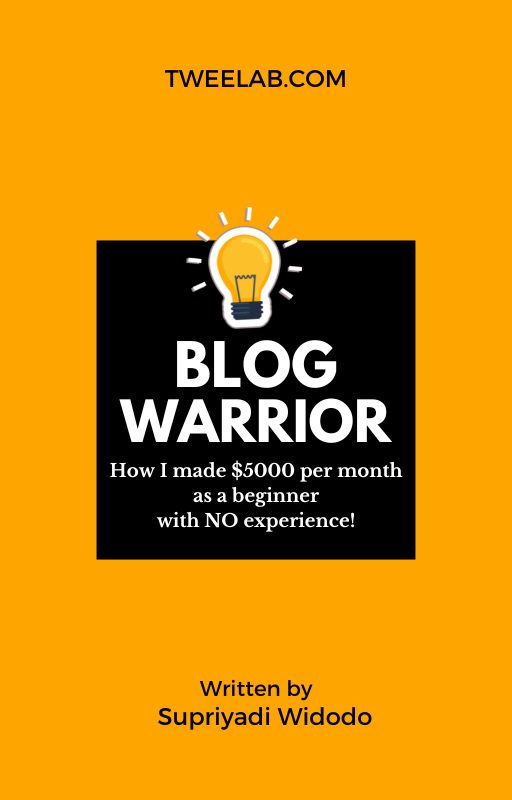Hey there, fellow content creators! As a SEO content strategist, I know how important it is to have quality blog posts that not only engage your audience but also boost your search engine rankings.
With so much competition out there, it can be tough to come up with fresh blog post idea that will not only keep your readers interested but also help improve your website’s visibility in the SERPs.
That’s why today I want to share with you 7 blog post idea tips that are sure to give your SEO strategy a boost.
From keyword research and on-page optimization tips to creating compelling content that resonates with your target audience, these ideas are designed to help you create high-quality blog posts that both Google and your readers love.
So, let’s dive in and start brainstorming some killer content!
Conducting Keyword Research For Blog Post Topics

As a savvy content strategist, it’s important to conduct thorough keyword research before crafting your blog post topics.
This involves exploring long tail keywords and conducting competitor analysis to identify gaps in the market that your brand can fill.
By utilizing long tail keywords – or phrases with three or more words – you’ll be able to tap into specific search queries that may have lower competition but higher conversion rates.
These types of keywords often provide more context around user intent, allowing you to tailor your content for maximum relevance.
Additionally, analyzing your competitors’ content strategy can reveal opportunities for differentiation and innovation.
By identifying gaps in their coverage of certain topics, you can create unique angles on those subjects that will attract readers and boost your SEO rankings.
With these tactics in mind, you’ll be well-equipped to generate compelling blog post ideas that drive traffic and engagement.
Blog Post Idea: Crafting Engaging Headlines To Capture Readers’ Attention

I’m a big believer in using emotional appeals to craft engaging headlines that capture readers’ attention. Doing so helps to create a strong connection with your audience and can be a powerful tool for boosting your SEO strategy.
When it comes to optimizing the length and structure of your headlines, be sure to keep them concise but impactful.
It’s also important to explore the power of keywords, as they can help to draw in more readers and boost your SEO rankings.
With a little bit of strategizing and creativity, crafting engaging headlines can be a great way to increase readership and improve your SEO performance.
Leveraging Emotional Appeals
Crafting engaging headlines is one of the most crucial aspects of a successful SEO strategy. One way to capture readers’ attention and make them click on your content is by leveraging emotional appeals in your headlines. Appealing to emotions is a powerful storytelling technique that can help you connect with your audience on a deeper level.
To start, think about what emotions are relevant to your content and how you can tap into them through your headline. For example, if you’re writing an article about overcoming adversity, use words like ‘inspiring’ or ’empowering’ in your headline to evoke feelings of hope and strength.
Alternatively, if you’re sharing a heartwarming story, consider using phrases like ‘touching’ or ‘heartfelt’ to convey warmth and compassion.
Remember that while appealing to emotions can be effective, it’s important not to manipulate or exploit your readers’ feelings. Use honest and genuine language that accurately reflects the tone and message of your content.
By mastering this technique, you can create headlines that not only capture readers’ attention but also encourage them to engage with and share your content.
In conclusion, leveraging emotional appeals in your headlines can significantly boost your SEO strategy by increasing clicks and engagement rates. When done correctly, it allows you to form a personal connection with your audience based on shared experiences or interests.
So next time you sit down to write a blog post or article, keep these storytelling techniques in mind as they could make all the difference for driving traffic towards your website!
Optimizing Length And Structure
Crafting engaging headlines that capture readers’ attention is a crucial aspect of any SEO strategy. However, it’s not just about using emotional appeals to hook your audience – the length and structure of your headline can also play a significant role in driving clicks and engagement rates.
To maximize readability, keep your headline concise and to-the-point. Generally, headlines should be no longer than 70 characters (including spaces) to ensure they don’t get cut off in search engine results pages. Additionally, utilizing subheadings within your main headline can help break up the text and make it easier for readers to digest.
When optimizing the structure of your headline, consider leading with the most important information first. This allows readers to quickly determine if the content is relevant to them before deciding whether or not to click through.
Experiment with different structures such as questions, how-tos, lists, or statements that offer value upfront.
By focusing on both emotional appeals and optimizing length and structure, you can craft compelling headlines that not only capture readers’ attention but also drive traffic towards your website.
Keep these tips in mind when creating your next piece of content to increase engagement rates and boost overall SEO success!
Exploring The Power Of Keywords
Crafting engaging headlines is just one part of a successful SEO strategy. Another crucial aspect to consider when creating content is the power of keywords.
Long tail keywords, in particular, can be incredibly effective in driving traffic and boosting rankings. Long tail keywords are more specific phrases that target niche audiences rather than broad terms. By incorporating these into your headline and throughout your content, you increase the chances of attracting highly engaged readers who are interested in what you have to offer.
However, it’s important not to overdo it with keyword density – stuffing too many into your text can actually harm your search engine rankings. To effectively incorporate long tail keywords into your headlines and content, start by researching popular search queries related to your topic. Then, aim to use them strategically while still maintaining clear and concise language that captures readers’ attention.
With practice, you’ll find the perfect balance between optimizing for SEO and crafting compelling content that resonates with your audience. By exploring the power of long tail keywords alongside other headline optimization techniques, you can create truly impactful content that drives clicks and engagement rates. So don’t hesitate to experiment with different strategies until you find what works best for you!
Incorporating On-Page Optimization Techniques For Better SEO

Crafting engaging headlines is just the first step towards capturing your audience’s attention. To truly boost your SEO strategy and improve your website’s ranking on search engines, you need to focus on incorporating effective on-page optimization techniques.
One aspect of this is improving meta descriptions. These brief snippets of text that appear under your page title in search engine results can greatly impact click-through rates. By crafting compelling and accurate meta descriptions that include relevant keywords, you’ll be more likely to attract potential customers to your site.
Another important technique for on-page optimization is optimizing internal linking. This involves strategically linking pages within your own website to provide a clear navigation path for both users and search engine crawlers. By using anchor text with relevant keywords, you can signal to search engines which pages are most important and help them understand the structure of your site.
To summarize, incorporating on-page optimization techniques such as improving meta descriptions and optimizing internal linking can go a long way in boosting your SEO efforts. Remember these key points:
- Craft compelling meta descriptions that accurately reflect the content of each page.
- Use relevant keywords in both meta descriptions and anchor text for internal links.
- Ensure a clear navigation path by linking related pages together.
- Regularly review and update internal links as needed to keep them current and effective.
By implementing these strategies, you’ll not only improve your website’s visibility but also create a better user experience for visitors navigating through your site.
Creating High-Quality Content That Resonates With Your Audience

Creating high-quality content is essential in boosting your SEO strategy. It not only attracts traffic to your website but also engages and retains your audience.
To achieve this, you need to understand the needs of your target market through audience segmentation. This process involves dividing your audience into smaller groups based on demographics, interests, behaviors, or preferences.
Once you’ve segmented your audience, creating personalized content becomes easier. You can tailor it to meet their specific needs and address their pain points effectively.
Content personalization ensures that each member of your target market receives a message that resonates with them personally. By doing so, they’re more likely to consume and share the content with others who have similar characteristics.
Incorporating both audience segmentation and content personalization leads to higher engagement rates which ultimately lead to better search engine rankings.
Therefore, as an SEO strategist, you should take time to research and analyze your target market thoroughly before creating any content. Doing so will ensure that you create high-quality material that speaks directly to the hearts of those who matter most – Your Audience!
Using Visuals To Enhance Your Blog Posts

Let’s face it, reading through long paragraphs of text can be tedious and tiresome. That’s why incorporating visual aids in your blog posts is crucial for engaging your audience and enhancing their overall experience on your website.
Using infographics to visually represent data or statistics can help break up large amounts of text while also making the information easier to digest. Another effective way to incorporate visuals into your blog posts is by adding videos. Videos not only provide a different format for delivering content but they are also incredibly shareable across social media platforms. By creating compelling video content that aligns with your brand messaging, you can attract new visitors to your website and potentially increase conversions.
To fully optimize using visuals in your blog post strategy, consider these 4 essential tips:
- Always choose high-quality images or graphics that are relevant to the topic at hand.
- Use alt-tags for all images so search engines can better understand what the image represents.
- Keep file sizes small to ensure quick load times on both desktop and mobile devices.
- Optimize any embedded videos for SEO purposes by including relevant keywords in titles, descriptions, and tags.
By utilizing infographics and videos as part of your visual content arsenal, you’ll not only improve user engagement but boost your SEO efforts as well! So don’t be afraid to get creative and experiment with different types of visual aids in your future blog posts.
Promoting Your Blog Posts For Greater Visibility

I think social media marketing is key to boosting visibility for blog posts, as it’s an easy way to reach potential readers.
SEO optimization is also essential, so making sure your posts include relevant keywords and link to other pages on your site can really help.
It’s important to get creative with your content too, so that your readers will be more likely to share your posts.
With the right mix of social media, SEO, and creativity, you can really take your blog’s visibility to the next level.
Social Media Marketing
Are you tired of creating blog posts that hardly get any traction? Promoting your blog is crucial to ensure it reaches your target audience. One effective way to do this is through social media marketing. By leveraging platforms such as Facebook, Twitter, and Instagram, you can increase your content’s visibility and attract new readers.
Creating viral content is the key to success on social media. Consider what topics are currently trending or relevant to your niche. Use catchy titles and headlines that will pique people’s interest in reading more. Additionally, don’t be afraid to experiment with different formats such as infographics or videos. The goal is to create shareable content that people want to engage with and spread across their own networks.
One effective strategy for social media promotion is partnering with influencers within your industry. These individuals have established followings who trust their opinions and recommendations. Reach out to them via direct message or email and offer to collaborate on a piece of content related to your blog post topic. This could include guest blogging, interviews, or product reviews.
Not only will this help expand your reach, but it also builds valuable relationships within your community. In conclusion, promoting your blog through social media marketing should be an integral part of your SEO strategy. Creating viral content and partnering with influencers will increase both traffic and engagement on your website while building brand awareness among potential readership groups. Keep experimenting with different tactics until you find what works best for you!
Seo Optimization
Now that we’ve discussed the importance of social media marketing in promoting your blog, let’s dive into another crucial aspect: SEO optimization. While social media can bring traffic to your site, optimizing it for search engines is essential for long-term success.
Conducting an SEO audit will help you identify areas where you can improve your website’s visibility and ranking on search engine results pages (SERPs).
One critical factor in SEO optimization is link building, which involves acquiring links from other websites pointing back to yours. These links act as ‘votes’ or endorsements of your content’s quality and relevance, signaling to search engines that your site is trustworthy and authoritative within its niche.
However, not all links are created equal – those from reputable sources with high domain authority carry more weight than spammy or low-quality ones.
To build high-quality links, focus on creating valuable content that people want to share and link back to naturally. Additionally, reach out to relevant websites or blogs in your industry and offer guest posts or collaborations.
Building relationships with other bloggers and influencers can lead to natural link opportunities while also expanding your audience reach beyond just social media followers.
By focusing on both social media promotion and SEO optimization techniques such as link building, you can create a holistic strategy for driving more traffic and engagement to your blog.
Remember that these efforts require consistent effort and experimentation – keep testing what works best for your specific niche and target audience!
Analyzing Your Results And Adjusting Your Strategy Accordingly

Tracking analytics is essential to understand the success of your SEO strategy. By analyzing metrics such as organic traffic, bounce rate, and conversion rates, you can determine which tactics are working and which ones need improvement. This information will guide you in making data-driven decisions that will increase your website’s visibility.
Experimenting with different strategies is another crucial aspect of boosting your SEO game. Not every technique works for every business or industry, so it’s important to try a variety of methods until you find what resonates with your audience. Whether it’s optimizing your meta descriptions or creating engaging content, don’t be afraid to step outside of the box and test new blog post idea.
Once you’ve tracked your results and experimented with various strategies, it’s time to adjust accordingly. Use the insights gained from tracking analytics and experimenting to fine-tune your approach continually.
The digital world is constantly evolving, so staying on top of trends and adapting accordingly ensures that your website remains competitive in search rankings. Keep up-to-date with the latest changes in algorithms and best practices by attending webinars, reading industry blogs or consulting an expert in SEO services.
Key Takeaways
- Conduct thorough keyword research to identify long tail keywords and gaps in the market that your brand can fill.
- Craft engaging headlines that leverage emotional appeals and optimize their length and structure.
- Use visuals such as infographics and videos to enhance your blog posts and improve user engagement.
- Promote your blog posts through social media marketing, creating viral content, and partnering with influencers.
- Incorporate on-page optimization techniques such as improving meta descriptions and optimizing internal linking.
- Create high-quality content that resonates with your target audience by understanding their needs through audience segmentation.
- Analyze your SEO strategy’s results, track metrics, and adjust your approach accordingly.
- Avoid common mistakes in keyword research, such as not considering long tail keywords or overdoing keyword density.
Useful Table
| Topic | Key Points |
|---|---|
| Conducting Keyword Research | – Explore long tail keywords and competitor analysis |
| Crafting Engaging Headlines | – Use emotional appeals and optimize length and structure of headlines |
| Using Visuals in Blog Posts | – Incorporate infographics and videos to enhance user experience |
| Promoting Blog Posts | – Utilize social media marketing, create viral content, and collaborate with influencers |
| On-Page Optimization Techniques | – Improve meta descriptions, optimize internal linking, and maintain clear navigation path |
| Creating High-Quality Content | – Understand target audience through audience segmentation and personalize content |
| Analyzing Results and Adjusting | – Track metrics, experiment with strategies, and adapt accordingly |
| Common Mistakes in Keyword Research | – Neglecting long tail keywords and overusing keyword density |
Frequently Asked Questions
How Can Social Media Be Used To Promote Blog Posts For Greater Visibility?
Engaging with your audience on social media is a crucial aspect of promoting blog posts and enhancing their visibility. By building up a loyal following, you can increase the likelihood that your content will be shared across various platforms, ultimately driving more traffic to your website.
One way to amplify social media engagement is through influencer partnerships, which allow you to leverage the reach of individuals who have established credibility within your industry or niche. When executed strategically, these collaborations can help you connect with new audiences while generating valuable backlinks to boost your SEO efforts.
As a savvy SEO content strategist, it’s essential to keep in mind the power of social media and influencer marketing when developing promotional tactics for your blog posts.
What Are Some Common Mistakes To Avoid When Conducting Keyword Research For Blog Post Topics?
As a SEO content strategist, it’s important to understand the best practices when conducting keyword research for blog post topics.
One of the common mistakes to avoid is relying solely on one keyword tool. It’s recommended to use multiple tools to ensure comprehensive and accurate data.
Additionally, don’t fall into the trap of targeting overly competitive keywords that are difficult to rank for. Instead, focus on long-tail keywords that have lower competition but still hold relevance to your target audience.
By avoiding these mistakes and utilizing effective keyword research techniques, you can create blog posts that not only boost your SEO strategy but also provide valuable information to your readers.
Are There Any Specific On-Page Optimization Techniques That Work Best For Mobile Devices?
Mobile optimization is like a well-oiled machine – it requires all parts to work together seamlessly in order to function at its best.
With the rise of responsive design, ensuring your website pages are optimized for mobile devices has become increasingly important.
One key factor in mobile optimization is page speed and load time, as users expect quick access to information on-the-go.
Implementing techniques such as compressing images and minimizing code can improve load times and ultimately lead to better user experiences.
As a SEO content strategist, it’s crucial to prioritize mobile optimization in your overall strategy to effectively reach your target audience wherever they may be accessing your site from.
How Can User-Generated Content Be Incorporated Into High-Quality Blog Posts?
Incorporating User-Generated Content (UGC) into blog posts can be a powerful way to promote your brand and boost your SEO strategy.
By leveraging content that’s created by your audience, you can tap into their interests and preferences while also creating valuable resources for your website visitors.
To get started with UGC, consider running a social media contest or asking customers to submit reviews or testimonials.
You can then use this content in blog posts, infographics, or other formats that will engage your audience and drive traffic to your site.
With the right approach, user-generated content can help you create high-quality blog posts that attract new readers and keep them coming back for more.
What Are Some Effective Ways To Track And Analyze The Success Of A Blog Post’s Seo Strategy?
Tracking and analyzing the success of your blog post’s SEO strategy is like being a detective on a case.
Keyword tracking allows you to follow the clues left by your target audience, while competitor analysis helps you understand how other detectives are approaching similar cases.
As a savvy SEO content strategist, it’s important to stay up-to-date with the latest tools and techniques for measuring success.
Whether you’re using Google Analytics or a third-party platform, make sure you’re monitoring key metrics like traffic, engagement, and conversions.
Don’t be afraid to pivot your strategy based on what you discover – after all, even the best detectives know that sometimes they need to change their approach in order to crack the case.
Final Thoughts
So, there you have it folks! 7 blog post idea that will make your SEO strategy soar to new heights.
But wait, before you go off and start typing away, let’s recap some of the common mistakes we see people making in their quest for search engine domination.
Firstly, don’t get too caught up in keyword research. Sure, keywords are important but they’re not everything. Create content that is valuable and relevant to your audience first and foremost.
Secondly, remember to optimize for mobile devices. We all know how frustrating it can be trying to navigate a website on our phones – don’t make your readers suffer through the same experience!
Lastly, keep track of your progress! Use analytics tools to measure the success (or failure) of your posts so you can adjust your approach accordingly.
And if all else fails? Well my friend, just throw caution to the wind and hope for the best! After all, isn’t that what being a SEO content strategist is all about?


